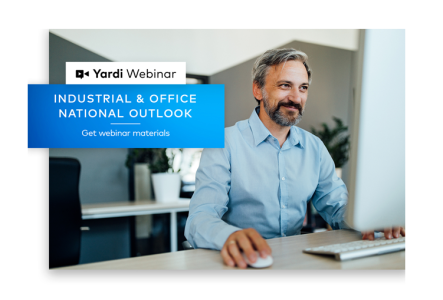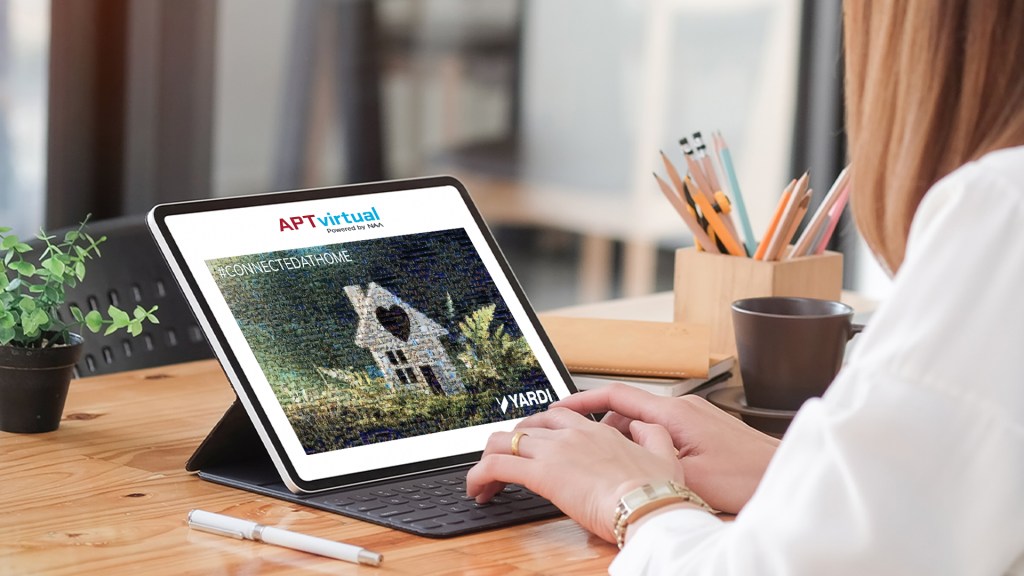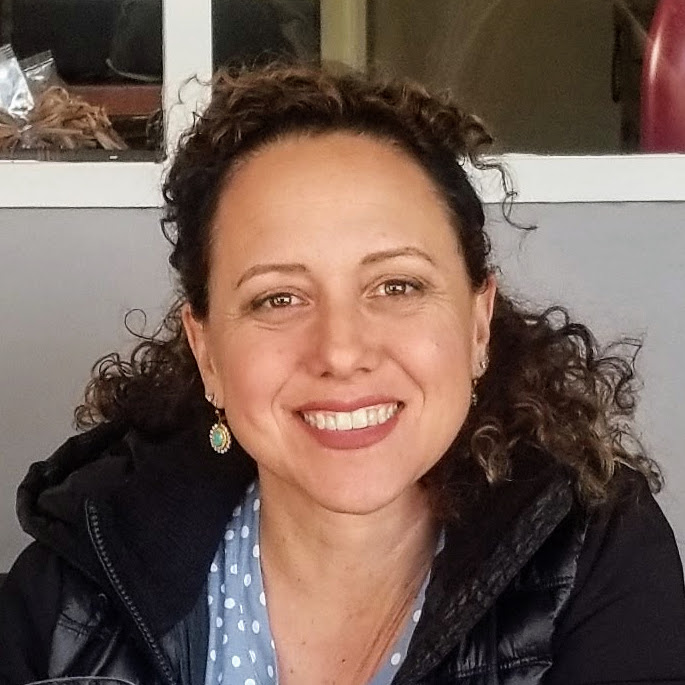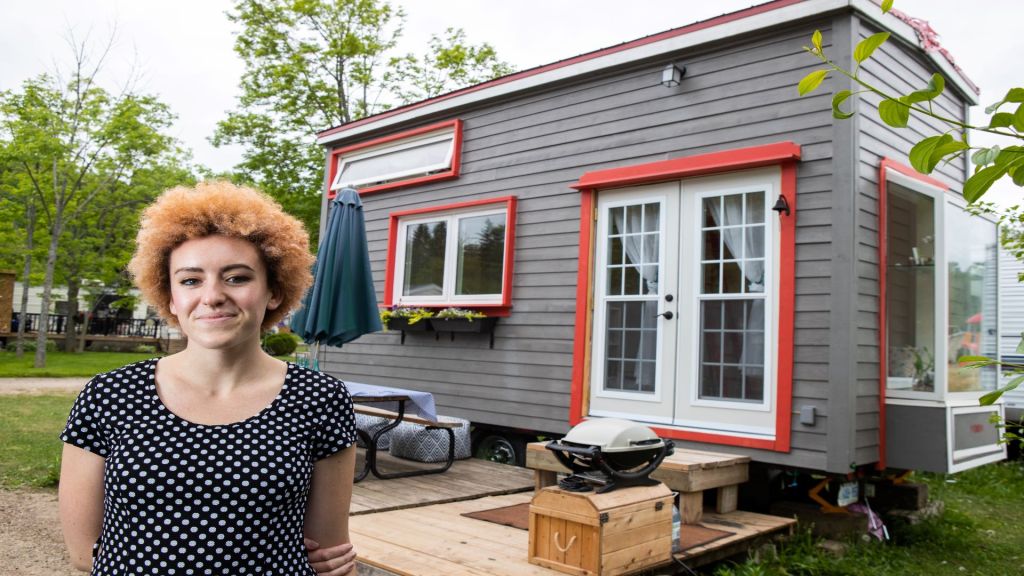Social distancing and partying don’t seem to go hand-in-hand. With a little creativity, though, you can host fun holiday events for your community while honoring safety protocols. Check out these five fun holiday party ideas that add value, encourage a sense of community pride and resident loyalty. Themed partner yoga party The first step in hosting a successful partner yoga party is to select the location. Warmer locations (ahem, southern states) may still make use of their tennis courts and other outdoor spaces. Cooler climates may consider their roomy community club or renting space in a local brewery or event center. You’ll want an area that is spacious and level. Once you decide where to host your partner yoga party, the rest is super simple! Contact a local yoga studio and request a private teacher for your event. The teacher should be familiar with the basics of partner yoga or acro yoga. Once the details are set, have residents register via the community concierge. Encourage residents to find a same-household partner and dress in holiday-themed activewear. (Cozy holiday pajamas would work, too!) On the day of the event, divide your space: every ten feet, leave a sticker, party favor or other marker. That will let duos know where to place the center of their mats. Then the experienced yoga teacher can guide pairs through safe yet fun postures that encourage teamwork, communication and laughter. If you charge for the event, consider donating a portion of the proceeds to a local nonprofit. #ShopLocal wine + beer tasting Collaborate with a local wine shop or brewery for this unique spin on bar hopping and wine tasting! Many local shops offer tastings that encourage clients to experience new brands or unique beverages. You can replicate the experience...
Opposite Outlooks
For Industrial and Office sectors
It’s a tale of two outlooks for the industrial and office real estate sectors, reported the experts from Yardi Matrix and CommercialEdge in a commercial real estate webinar presented on Nov. 11. As the end of 2020 nears, each market has a different trajectory. For owners and investors in the office sector, the full impact of the pandemic and its impact on the way employees work, especially in the knowledge and technology sectors, has yet to be unveiled. Major office properties tend to operate on long leases, so while rent remittance has been generally solid this year, as leases come to term in 2021 things could change. The big question, said Yardi Matrix vice president Jeff Adler, is what use of office space looks like in the future. One thing 2020 has taught us is that it likely doesn’t look like the old model of spending five days a week in a cubicle. “There is a re-evaluation of ‘what is the purpose of space?’ Was the purpose of that space that people got things done there? Or was it a culture purpose? If it was simply to do a task, it’s become clear that task can likely be done at home. How space is used, why space exists and why you need it in the first place is going to be reimagined,” Adler said. “What kind of office footprint do you actually need to achieve the business goals that you have?” The answers to those questions will determine the floorplans and lease terms of offices post-pandemic. Also at play: where they’re located (public transit use is still dramatically decreased) and how many workers will come to the office on any given day. Right now, going back to a 5-day office work week seems highly...
Office Re-entry
Updates from Service Providers
The topic of safely re-entering the workplace has now been top of mind for over half a year. While some businesses are still closed and employees are working remotely, there are a growing number of offices who have decided to open their doors following local safety guidelines. On a recent BOMA webinar, a group of service providers ranging from software vendors to elevator engineers to wholesale suppliers discussed best practices for ensuring employee health and safety while successfully reopening their physical spaces. Brian Sutherland, Yardi industry principal, detailed some trends that Yardi has seen based off research from CommercialEdge: Office vacancy is currently at 10-15%. Since April, subleasing is up 35% as tenants try to either downsize or upsize for distancing purposes. New construction is down 40% from the previous year among office assets. Office demand is changing: f leasing terms, private office demand and suburban models are all growing. Rent is being paid, but physical occupancy is at risk: landlords are considering whether long-term leases are sustainable or whether tenants will not need the space they’re paying for. Only about 12% of New York City workers are back in office, as of latest estimates. There are specific questions to analyze when considering a move back into the office. Employees who want to confidently re-enter the workspace are asking how to accurately report health status updates and how to stay connected with colleagues. Office managers, on the other hand, are tasked with ensuring a safe and orderly re-entry while assessing how to limit available workspace to promote health and safety and follow guidelines. Landlords want to encourage tenants to return to the office, but they first need to understand their tenants’ use and occupancy of the space. In order to help answer some of...
APTvirtual
How we connected
The apartment industry met online at APTvirtual, powered by NAA, from Nov. 2-6 to forge more powerful connections with each other and the technology that will take us forward as we stay connected at home. With the theme “Yardi keeps you and your residents connected” we were there to share, learn and spark inspiration together. What we shared It was a pleasure to not only hear your voices but also see your faces, including through the virtual mosaic that allowed attendees to be together in spirit. Thank you for sharing your photos to help build this fun digital community — look closely to find your friends and colleagues. How we learned We hope you joined our educational sessions, but if you missed them and were a registered attendee, you can watch them on demand until Dec. 4. Big Data, Benchmarking and Forecasting: A Tale of Two Studies With advances in big data, machine learning and artificial intelligence, the ability to manage your business with laser precision and shape future outcomes has never been greater. In this session, industry leaders share how they use operational benchmarks to identify opportunities and predictive analytics for marketing and leasing to make timely changes and realize gains. Here are a few sound bites: “Using machine learning, we’re able to pick out patterns and trends in a much broader pool of data. We have lots of data points, including around spending on SEM and how it correlates to leasing ratios. Seeing the data reinforces decisions about when to spend marketing dollars to meet our leasing and revenue goals,” said Shawn Cardner, executive vice president at Grubb Properties. “Our asset management team takes a very active role in the budgeting process, and benchmarking is extremely important to them. Being able to look at a region and do comparisons — down to spending on plumbing and landscaping — gives us visibility down to budgeting line items,” said Joe Anfuso, chief financial officer at MG Properties. Emerging Issues: Looking Ahead to the Post-Pandemic Future Even as we deal with ongoing economic and societal impacts from the COVID-19 pandemic, we are all thinking about what the future might look like. Universal truths for our industry will persist: people will still need to rent apartments. “What we’re seeing from our RentCafe.com surveys is that renters want more choice with self-guided and virtual tours. I think these options for more convenient touring will persist long after the pandemic,” said Esther Bonardi, vice president of marketing at Yardi. Bonardi was joined by Garin Hamburger from Pinnacle, Pei Pei Mirabella from Bozzuto and Ian Mattingly from LumaCorp to share forward-thinking ideas for multifamily’s post-pandemic future, including marketing and leasing. Where we talked tech Thanks for visiting our booths to chat with Yardi experts and tell us what you’re excited about! Big data and self-guided tours are leading the way into 2021, and according to our polls, 69% of respondents are most excited about self-guided tours. Asset IQ, part of Yardi Elevate, uses big data to deliver predictive analytics and prescriptive actions to lower costs and increase revenue. RentCafe Self-Guided Tours helps operators meet the demands of a changing market, giving prospects the ability to tour at their own pace and maintain social distancing. Booth visitors also learned about RentCafe Chat IQ, an AI-powered chatbot that learns and adapts to fit each community. Who we met We hope you enjoyed hearing from Anant Yardi himself during the Connect with Yardi Executives session. In addition to talking about the state of the industry and tech trends, Mr. Yardi said, “Relationships with our clients are so important to us. I’m looking at all of you and so many memories of working together over the years are coming back. Thank you for dedicating your time to this.” How to connect with us now Missed us at APTvirtual? Contact us, and we’ll show you what you...
Apart Together
Team Yardi Embraces WFH
Remote work environments have their fair share of advantages and disadvantages. Seven months into telecommuting, Yardi employees across the U.S. weigh in. March madness, IT edition In mid-March, Yardi’s IT department miraculously (read: after much hard work and dedication) managed to transition more than 30 global offices into a remote work environment in about two weeks. It was no easy feat. The diligence of the IT department and the patience of fellow employees made for a relatively smooth transition. Virtual town hall meetings kept employees up-to-date on the latest developments from the corporate headquarters. Productivity remained steady as team members learned to navigate workflows from home. Gradually, a new normal set in: video conferencing replaced conference rooms and chats replaced quick conversations over cubicle walls. Social committees reconvened team-building activities to maintain camaraderie and engagement. Pets became coworkers who made (sometimes) unsolicited appearances on calls. Yardi team members around the world began to witness firsthand the joys and challenges of their remote work environments. Different, but still efficient Some characteristics of office culture simply cannot be replicated when working from home. Chatting with coworkers in the lounge, grabbing lunch together and team functions are just a few of the office features that employees missed. “Working at home can be a bit stagnant,” admits Luis Estrada, a marketing writer in Miami. He conducted his interview for this post via Microsoft Teams chat. “My dining room is my new office. It’s routine, same old stuff.” “I miss my coworkers and the close collaboration in the office,” says Evan Hearn, energy management analyst in Atlanta. Taylor Leandro, HR generalist in Santa Barbara echoes the sentiment. “I mostly miss the daily interactions with my teammates and fellow colleagues. I also miss the ability to walk over to someone...
Reach, Racing + Robots...
Melissa Zavas, RentCafe REACH
Marketing, motorcycles and robotics all find a home within Melissa Zavas. The California native has creatively blended her interests in a way that empowers teens and builds community. The road to Yardi Zavas is a marketing specialist with RentCafe REACH. She and her team provide search engine optimization (SEO), pay-per-click (PPC) advertising, social media marketing and reputation management services to Yardi clients. Learn how SEO and PPC can increase leads by 160%. The most challenging aspect of her job is staying on top of digital marketing trends and Yardi’s quickly developing software. “Yardi is incredibly growth-oriented. We are consistently growing our current software and expanding into new areas,” says Zavas. “But it’s worth it,” she smiles. “I find developing relationships with my clients and across teams very rewarding. I’m also accustomed to the changing demands of digital marketing.” Zavas began her marketing career shortly after college. Her family is heavily involved in the automotive industry, and her father helped found the Baja 500, a Mexican off-road motorcycle race on the Baja California Peninsula. She soon began a mail-order motorcycle parts division as an extension of her family’s wholesale company. “Quickly, I developed a loyal customer base by giving technical advice to match people’s riding styles with the performance parts we sold,” says Zavas. “Mail order was quickly turned into an eCommerce business as internet shopping took off. I created our first website and developed the eCommerce portion. It grew over 12 years. Through those years, I gained experienced in both business and in digital marketing.” Her technological insights and marketing savvy paid off. Zavas was named a Who’s Who Female Owner in the Automotive Industry by Cambridge Who’s Who in 2007-2008. Though Zavas sold her motorcycle parts business, she is still an avid motorcyclist....
Arcadia
Expands with Yardi IM
Arcadia Management Group has expanded its use of the Yardi product line with Yardi Investment Manager. Arcadia will continue to grow its service offerings to be a one-stop shop for investment and property management operations. Investment Manager will take the investment side of Arcadia’s business model to the next level for third-party clients as well as investors and strategic partners. The accessible online portal provides a secure way for investors to retrieve investment and portfolio metrics and related documents anywhere, from any device. Arcadia will be able to automate the subscription agreement process and easily view and track all key fundraising milestones. “Investment Manager provides internal stakeholders with an intuitive, easy to understand view into our most complex deals and joint ventures. The user-friendly online portal gives our investors and external partners timely access to data they need, which allows us to further expand our fund management offerings,” said Gary Shaw, president of Arcadia. With Investment Manager, Arcadia continues to increase efficiency by leveraging industry-leading technology. It will provide a platform for internal collaboration and investor transparency. This will allow Shaw and his team to expand and improve client relationships and service. “We are very excited that Arcadia has chosen Yardi to expand their investment management services, and we look forward to further empowering Arcadia’s growth and success,” said Robert Teel, senior vice president of global solutions for Yardi. Download a brochure to learn more about Yardi Investment Manager. About Arcadia Established in 1986, Arcadia Management Group is based in Phoenix, Arizona and manages over 40 million square feet of commercial real estate across the United States. Arcadia’s business model is unique in that the company’s core business is third-party property management services. This management-centric approach, without internal brokerage or leasing, makes Arcadia attractive...
RentCafe Wellness
Boosts Connections
The latest addition to the Yardi Senior Living Suite helps senior living staff and residents’ families stay connected as senior living communities maintain largely isolated from outside contact during the COVID-19 pandemic. Community managers can use RENTCafé Wellness to schedule healthy activities, track attendance and create custom-branded online wellness calendars. Activity organizers can create calendars on a community’s marketing website, manage RSVPs from residents and their families, and assign staff to the activities. “RentCafe Wellness combines with the rest of the Yardi Senior Living Suite to help communities elevate residents’ quality of life and maintain connection with family members in these challenging times,” said Ray Elliott, vice president of senior living for Yardi. “The solution also helps community staff work more efficiently by enabling management of calendar content, design, publication, registration and attendance from a single connected solution.” RentCafe Wellness is an element of RentCafe Senior Living, a secure portal that residents, staff and families use for payments, communication, service requests and other operations. Learn more about how RENTCafé Wellness and other RENTCafé Senior Living solutions can help residents of senior living communities stay connected and...
Multifamily Movement
Yardi Matrix updates industry trends
The number of Americans who have moved since February 2020 wasn’t unusual compared to typical U.S. mobility trends, but there has been a distinct shift in where they are relocating, according to the latest Yardi Matrix multifamily webinar. In brief, big urban cities like New York, Chicago, San Francisco and Miami are out, while second tier markets and tech hubs like Austin, Kansas City, Sacramento and Boise are in. “What we really have seen is a movement of people that is different from what we have seen in the past,” said Jeff Adler, vice president of Yardi Matrix, who delivered the analysis. A webinar on the commercial real estate market with valuable insight for that sector will take place on Wednesday, Nov. 11. You can register here. The Nov. 4 multifamily session, which is now available to view on demand, summarized the trendlines for the apartment market nationwide. It has been relatively resilient despite the economic fallout caused by the COVID-19 pandemic. For example, in the month of October, 94.6 percent of apartment households had paid rent as of Oct. 17, according to NMHC’s Rent Payment Tracker. However, small owners and managers of less than 50 units are suffering. These owners typically hold small balance loans, or SBLs. “Because SBLs are typically used to finance apartments with less than 100 units, each resident that has trouble paying rent has a more significant impact on the property’s cash flow,” stated the Matrix summary. The bulk of the 16 million Americans who have moved since February, though, are working from home and seeking a relocation situation that will be advantageous during the remaining months of the pandemic. They’re seeking out apartments or single-family homes where they have more space and eschewing the walkable urban lifestyle that...
Inclusive Hospitality...
Changing the status quo
At its core, the travel industry encourages new experiences and exploration. It invites guests to find comfort in unknown terrain and discover a sense of belonging amongst new people. Unfortunately, the travel industry has not historically operated in the same welcoming inclusivity that it promotes. “This world is a diverse one—so how could the very industry that promotes the exploration of that world not be?” inquires Tiana Attride, editor at Here Magazine. As the sole black editor, often the only black staff member and commonly the only person of color at press events, Attride is frustrated by the lack of inclusion practices within travel businesses and marketing. Sheila Johnson, co-founder of RLJ Companies, a Yardi client, founder and CEO of Salamander Hotels & Resorts, has experienced a similar discord between travel industry messaging and practices. In her 40 years as an entrepreneur and 15 years focusing on hospitality, she has seen small improvements in inclusion and equity practices. “But there’s also the rub,” Johnson reflects. “I recognize we still can and should do more.” Both women, like other minorities interviewed from the industry, see a clear path forward. A foundation for success The first step to create a more inclusive hospitality industry begins with acknowledgement. “An unfortunate number of people in this country – black and white – are far from coming to grips with institutional racism, the kind of racism that is also baked into the very fabric of so many American institutions,” says Johnson. “For this reason, many people still cannot even talk about racism, much less actually do something about it.” But hospitality providers are strongly positioned to tackle the issue head on. “Our industry is a living laboratory of cultures. Every day we make it possible for team members from...
Tiny Homes
Essential housing
On the surface, tiny homes seem to address the needs of those who need the least. The affluent New Yorker seeking a COVID getaway near the beach, or a recent grad making a name for herself off the grid are the ideal images of tiny house inhabitants. But in (what we hope is) the wake of a pandemic, public health officials and city planners are seeing the value of tiny houses for those in need. The compact panacea This summer, the U.S. faces an interconnected web of high unemployment, a high cost of living near job hubs and seemingly unending wave of COVID-19 infection rates. Those who can are migrating from cities to less populated suburbs in search of space and peace. They’re often taking their remote work with them. But for more than half a million homeless people in the United States and 16.3 million unemployed, that’s not an option. City planners are turning to tiny houses to de-intensify shelter housing, bring people in off of the streets and offer affordable housing for those in need. Additionally, the compact units facilitate social distancing while offering access to private, outdoor space that isn’t readily available in multifamily and public housing. Long term, low-cost tiny houses provides a pathway to homeownership (and potentially, wealth-building equity) for marginalized communities. It took a pandemic to showcase the true value of tiny homes. Affordable housing and homeless services in America are permanently enhanced because of it. Tiny homes improve public health in major metros Seattle was one of the first cities in the US to feel the full force of the pandemic. The city’s vulnerable populations, the homeless and elderly, were the hardest hit. On April 20, Public Health Seattle & King County officials reported 112 COVID-19 infections amongst shelter occupants and staff. Later that month, The Multi-Service Center South shelter in San Francisco reported 96 guests and 10 staff tested positive. As the pandemic spread, major metropolitan reported high infection rates among vulnerable populations. Homeless shelters, traditionally arranged in barrack-style floorplans, did little to slow the spread of the virus. Major metros throughout the nation soon ditched conventional shelter arrangements to promote social distancing: they removed beds to lessen density, and converted hotels and public buildings into emergency shelters. These short-term solutions, however, highlight problems that won’t quickly fade from memory. Homeless shelters are underserved and overpacked. Low-Income Housing Institute’s (LIHI) tiny house villages stood out as a long-term solution. They facilitate public health procedures, foster a sense of safety and autonomy, and have proven to be more cost-effective than conventional shelters. LIHI operates 12 villages serving Seattle, Olympia and Tacoma. The newest community stands in Puget Sound, offering 400 houses that have helped more than 1,000 each year. Two more communities are in the works with at least 50 houses. Each community contains units with less than 100 square-feet. The tiny spaces offer more personal space and privacy than shelters. The houses permit residents to live and sleep more than six feet apart. On-site case managers provide the support residents need while facilitating a path towards permanent housing. The villages pay off for residents as well as city managers. The City of Seattle, for example, funds nine villages. The average cost of tiny house living is only $38 per night. That’s $18-$94 less per night than The City’s current housing options. The construction of the homes is also a cost saver for The City. Shelterforce organizes volunteers to build the homes. Much of the construction can take place off-site in volunteers’ yards when necessary. The free labor reduces home construction costs to $2,500 each. In dire straits, Shelterforce hires contractors who build the homes for $5,500 including labor and materials. In both cases, the per square-foot cost has proven to be more cost effective than conventional shelters. Be Loved Village, Asheville combats homelessness and affordability crisis Asheville has struggled with affordability...
iPad 2020
The new iPad Air
Apple’s newest iPad Air features a 10.9-inch liquid retina display and five finishes including silver, space gray, rose gold, green and sky blue. The device includes 3.8 million pixels, full lamination, P3 wide color support with a resolution of 2360×1640 at 246 pixels per inch, True Tone and an anti-reflective coating. Given the fact that many users now have a mask on their face much of the time, making Face ID complicated, the new iPad Air includes the throwback Touch ID sensor. The sensor is integrated into the top button and allows you to unlock iPad Air, log in to apps or use Apple Pay. iPad Air shares the same magic keyboard as the iPad Pro, as the difference between them is very small—11 inches for the iPad Pro. Apple’s most advanced chip iPad Air includes Apple’s most advanced chip, A14 Bionic packed with 11.8 billion transistors for a better performance and power efficiency. The A15 Bionic handles even the most demanding apps such as editing 4K videos, play immersive games, create works of art and so on. Using five-nanometer process technology, the latest A-series chip includes a six-core design for 40 percent boost in CPU performance and a new four-core graphics architecture for a 30 percent improvement in graphics. Environmentally Friendly Part of Apple’s plan to become carbon neutral by 2030, the new iPad Air uses a 100 percent recycled aluminum enclosure and 100 percent recycled tin for the solder on its main logic board. Additionally, the new speakers in the device use magnets with 100 percent recycled rare earth elements so the device remains free of harmful substances, is highly energy efficient and uses wood fiber packaging that is recycled. New bits and pieces The Air moves to USB-C like the iPad...
Office Update
From CommercialEdge
With office listing rates falling, vacancies increasing and new development slowing, the impact of the COVID-19 pandemic on the U.S. office market is showing clearly after several months’ delay. The latest data, collected in the National Office Report from CommercialEdge powered by Yardi, shows that the national average full-service equivalent listing rate fell 25 cents in September from the previous month, to $38.07. This was a 0.5% decrease from the same period last year. The national vacancy rate increased 30 basis points month-over-month to 13.6%. “Listing rates have remained relatively sticky during the pandemic, with rates not decreasing concurrent with falling demand,” states the report. “The long-term nature of office leases coupled with a lack of potential tenants gives owners no incentive to dramatically lower rates at the current time.” Meanwhile, the amount of new office stock under construction has fallen steadily throughout the year. Only 24 of the top 75 markets analyzed have more square feet under construction than at the start of 2020. “As it becomes increasingly clear that things will not return to normal until a vaccine is made widely available, developers have not been replacing completed properties with new construction,” states the report. Gain all the insight in the October National Office Report from the research experts at CommercialEdge. CommercialEdge provides extensive property data that includes transaction, ownership and debt information, offering nationwide coverage across all commercial real estate asset types. Use the platform to uncover vital market data and get insights with the latest lease and sale listings. Want more key takeaways? Join the Office National Outlook webinar set for Wednesday, Nov. 11. Yardi Matrix vice president Jeff Adler and team will lead an informative presentation of the current trends and what to expect...
Spirited Celebration
Yardi ATL Festivities
The Yardi Atlanta office recently completed a successful Halloween Week! Going virtual was no easy feat, but the events committee tapped into the office’s love of competition to make a fun and memorable event. Hype years in the making Over the years, the social committees at Yardi Atlanta have helped to develop its office culture. The office is known as a place that fuels its hard work with camaraderie and fun. Annual Halloween celebrations brought team members together in pursuit of glory —until this year. With most of Yardi Atlanta working remotely, the office would not come together to celebrate Halloween. What would normally be a week of in-office costume parties and cubical decorations faced a great challenge in 2020. How could Yardi Atlanta take the festivities into a remote work environment? Would it still be fun and engaging? Undaunted by the task, the social committee launched a series of virtual events that encouraged creativity and competition. Each weekday featured a new challenge or activity to engage team members in the holiday spirit. Monday kicked off with a Pumpkin Selfie contest. Employees showed off their carving skills along with their smiles. The Best Pumpkin Selfie award went to Camilo Perez! After clocking out for the evening, a virtual call taught team members how to be Absinthe mixologists. Tuesday’s Throwback Halloween Costume Pictures conjured fringe haircuts, teased bangs and other horrors better left in their graves. There were real gems and great conversation starters among the submissions. Wendy Caffery received the Best Throwback Costume award. Working from home offers even more creative freedom to decorate! Wednesday’s competition received submissions of Halloween Home Décor, from fun and festive to ghoulish and frightening. Amber Brown earned the Best Decorations award. The workday then ended with Ghost Stories...
Connect at APTvirtual
What Not to Miss
The apartment industry is meeting online at APTvirtual powered by NAA from Nov. 2-6 to spark inspiration as we all stay connected at home. Once again, Yardi is proud to participate as a sponsor, exhibitor and educator at one of the industry’s most anticipated conferences of the year. And what a year 2020 has been. To ensure the long-term success of the industry, Yardi has donated $1 million to the COVID-19 Rental Housing Support Initiative, a partnership with NAA, IREM, NMHC and NARPM. APTvirtual lets attendees engage with the latest developments in the apartment industry, from business best practices to marketing strategies and leasing innovations. You’ll also hear amazing stories from this year’s Game Changer speakers to kick off each day of the event. The platform is now live, so it’s an ideal time to start planning your schedule. We’re excited to meet you there. Not registered yet? Use discount code APTvirtual200 for $200 off. Connect with Yardi: Enter to win! While our technology helps you and your residents stay connected at home, our various activities at APTvirtual help you connect to the NAA community — and enter to win a major giveaway for a new at-home experience! First, submit your conference photo to the Virtual Mosaic. It connects digital threads from all over the country that you can watch come to life as a collaborative, branded image. Then, make time to visit with us. We have four virtual booths setup so you can connect with the technology most applicable to you: Yardi for all things operations and big data, Yardi Breeze for simplified property management, RentCafe for marketing and Yardi Matrix for market research data. Engage with us in our virtual booths using the links below and get a Starbucks® gift card to enjoy coffee on us, plus enter for a chance to win more. More ways to engage: Tech you can’t miss! Come to the Yardi booth and “Connect with Yardi executives” for a special discussion happening on Thursday, Nov. 5 at 1 and 1:30 p.m. EST (two consecutive sessions). Anant Yardi will be there to answer your questions and share insights along with Esther Bonardi, Terri Dowen, John Pendergast and Chris Ulep. During the daily expo hours, visit us to connect with experts on the newest solutions for multifamily operators. You’ll have a chance to join our breakout rooms on marketing, big data and operations to ask questions and hear from our top innovative experts in the industry. Let us show you why big data is a big deal with Yardi Elevate, including Asset IQ for predictive and prescriptive insights with benchmarking, Forecast IQ for expediting accurate budgets and new Maintenance IQ for shortening unit turns. Do you have the right technology to meet the needs of today’s renters? Join us at the RENTCafé booth for innovative solutions to ensure your properties are ready to meet the demands of a changing market. Give prospects the ability to tour at their own pace and maintain social distancing with RENTCafé Self-Guided Tours. Also, get up to speed with RENTCafé Chat IQ, an AI-powered chatbot that learns and adapts to fit each community. Stop by and we’ll show you a chatbot designed specifically for you. At the Yardi Matrix booth you can learn how to utilize market intelligence to identify value-add investment opportunities. Newly added estimated DSCR and LTV data helps you easily find distressed properties, benchmark current performance and plan future financing decisions. Schedule a personal demo to see this new data set. We’d also love to show you Yardi Matrix Student for insight into purpose-built and shadow market properties surrounding over 1,000 colleges and universities across the U.S. Visit the Yardi Breeze booth to see why thousands have switched to our refreshingly simple property management platform. Breeze offers everything you need to market and manage your portfolio from anywhere, on any device. Simple pricing and convenient monthly...
Senior Living Spotlight
At LeadingAge event
“Our world has changed. Our field has changed. Now we need to prepare for what lies ahead and determine how we move forward, together.” That’s how LeadingAge describes the purpose of its annual meeting in November, which is always one of the senior living industry’s premier events. And that’s exactly what Yardi will do this year — twice, in fact, since the conference, originally scheduled for San Antonio, will take place as two three-day virtual events. Along with cosponsoring LeadingAge’s technology development initiatives, Yardi will contribute to the conference by spotlighting the Yardi Senior Living Suite, which helps senior living community operators improve resident care and staff efficiency. The suite enables management of all operations on a single connected solution, including accounting, clinical services, marketing and sales. Other elements of the Yardi Senior Living Suite include business intelligence, electronic charting, resident health assessments and pharmacy integrations. LeadingAge will include all the hallmarks of a dynamic in-person conference including keynote speeches, educational sessions and a performance from comedy and magic duo Penn and Teller. Yardi is dedicated to interacting as fully this time as it did at the most recent LeadingAge annual conferences, which drew about 4,500 senior living professionals to San Diego and Philadelphia. Our experts would love to chat with you about how technology can help senior living community operators manage today’s challenges. Please contact us to make an appointment during the Nov. 10-12 or Nov. 17-19...
BoKlok
Ikea’s fix for public housing
In the States, we’ve imported several great things from Sweden. Flat-pack furniture makes our rentals feel like home, and True Blood wouldn’t be the same without Alexander Skarsgård. But if you haven’t considered how Swedish imports could improve the quality and availability of subsidized housing, now is the time. The value of inexpensive housing Per a recent survey of 200 metros around the world, 90% of cities are considered “unaffordable.” Average housing prices are more than three-times median incomes in most neighborhoods. In the U.S. alone, The Harvard Joint Center for Housing Studies reveals that 38.9 million households are cost-burdened, spending more than 30% of their income on housing. For low income households, affordable rentals are hard to obtain. In the U.S., there are roughly 36 available affordable units for every 100 extremely low-income renter households. The National Low Income Housing Coalition reports a shortage of 7 million affordable rentals. The National Multifamily Housing Council and National Apartment Association (NAA) express a need for a more conservative 4.6 million new units by 2030. As city planners seek development and housing strategies that offer efficiency, quality and returns, they may find inspiration in Sweden. The BoKlok method could bridge the gap between what cities need, what cities can afford and what low-income renters can pay. Affordable housing, Ikea style BoKlok, a joint venture of Ikea and Swedish construction company Skanska, has successfully completed 11,000 homes throughout Sweden, Finland and Norway. The portfolio includes a senior housing collaboration with Queen Silvia of Sweden. BoKlok brings the IKEA model to senior and affordable housing. The company keeps prices low by focusing on high volume and complete supply chain management: it controls land acquisition, product development and manufacturing. Large volumes and ample repetition facilitate fast turnarounds and low production costs. The venture also controls...
The Redwood Toronto
Domestic Violence Awareness
October is National Domestic Violence Awareness month. We unite to support vulnerable members of the community and end domestic abuse through education, advocacy and service. At The Redwood, an emergency shelter for women and children fleeing abuse, every month is domestic violence awareness month. Even through the pandemic, the non-profit works tirelessly to ensure that women and children have the resources that they need to escape their abusers. The Redwood offers essential services for women who are courageously leaving abusive relationships. At the site, they receive emergency shelter, meals, crisis intervention, counseling, and educational services for children. They can also access employment assistance, legal advocacy and accompaniment to appointments like court dates where a woman may have to face her abuser. Abi Ajibolade is the Executive Director at The Redwood. She began with the organization 16 years ago after immigrating to Canada from Nigeria. Her compassion for women experiencing violence prompted her to join The Redwood, but it was the organization’s approach to its mission that made her stay. “The Redwood thinks beyond band-aid solutions and looks to make systemic changes in the community to end gender inequities that perpetuate violence against women,” she says. “The strategy hasn’t left me disappointed for a single day, since I joined. We live and breathe that vision, that mandate, and that’s what has kept me here.” Steps towards independence bring the greatest risks Women’s first steps toward freedom are far more perilous than the public and legislators often believe. “People think that once they leave an abusive household, everything is fine,” explains Ajibolade as she shakes her head. “That’s not true. Even the legal system thinks it’s true. It’s not. Leaving the home is a small step. In a way, it exposes her to additional risks.” “We’ve lost...
Hospitality to Healthcare
Senior Living Tech Shift
Senior housing providers are witnessing a major shift within the industry. Traditionally following a hospitality format, today’s senior living specialists now adapt pages from healthcare models. The pandemic prompted senior living staff to implement more on-premises care methodologies. The results are fewer in-person touch points, enhanced health tracking and preventative care. With these changes come new challenges. Bob Kramer is the co-founder of the National Investment Center for Seniors Housing and Care (NIC), a Yardi partner. Kramer shares his insights on the challenges faced by senior housing professionals as they shoulder more on-premises care for residents. Learn about the benefits of the NIC Actual Rates Initiative for senior housing market data. A transformation born from necessity In recent history, senior housing providers focused on the resident experience. Staff left health care in the capable hands of off-site experts. COVID-19, however, required staff to renegotiate the barrier between hospitality and health care. In addition to their existing responsibilities, housing providers initiated on-premises health care tasks. “[The pandemic is causing] what you might call the creative destruction of some of what has been the paradigm to senior housing and care,” Kramer explained during a panel interview. “The senior housing and care model that we don’t do health care, and that we ship out our residents for health care services, I just don’t think that model will survive.” He continued, “That doesn’t mean senior living providers need to abandon hospitality-driven models altogether. But it does likely mean they need to rethink how they coordinate care within their communities.” Reimagining doctor’s visits and communication “In just the past six months, older adults have learned to fear the hospital, the emergency room and the doctor’s office, as these are places now associated with a deadly pandemic,” Kramer said. With the help of site staff, residents have taken comfort in telehealth options. Housing professionals forged partnerships with health care providers to offer remote care. Through this alternative, seniors skip unnecessary transport to medical specialists. They receive assessments and basic care from the comfort and familiarity of their communities. Community staff members implement software to help manage residents’ chronic conditions and any changes in wellness. Routine maintenance that was once handled off-site now takes place within residents’ rooms. Emerging from the pandemic, it’s unlikely that telehealth services and community-centered care will fade from practice, suggests Kramer. Staff can rely on technology and data to make the new on-site care model more efficient and secure. Data and interoperability at the intersection of senior housing and health care Interoperability and data management are lingering concerns with senior living providers. The concern has only grown as more care takes place within communities instead of hospitals. An upcoming change in policy may provide the guidance and structure that senior living providers seek. The Interoperability and Patient Access final rule from the Centers for Medicare & Medicaid Services (CMS) requires all health plans to present their data as an application programming interface. Proposed to take effect by July 1, 2021, the policy gives developers insight into general health care data. They can then use that information to address interoperability issues in new technologies. The data can also highlight trends in resident behavior or assessments that allow staff to take proactive care measures. As with all things data, the more information uploaded, shared, and properly analyzed, the more accurate insights become. “The challenge is making sure they have the means to upload their observations that are then screened by an algorithm searching for red flags and are instantly shared with those responsible for the delivery and care for that individual,” Kramer said. While site staff will enter their observations, residents can be empowered to share their health data on their own. Kramer expects strong participation. He observes that many Boomers want to be proactive about their health. “I do think that this is the role of tech, in enabling Boomers to self-direct...
YASC Global
Fall 2020 event recap
October 20-22, Yardi provided three days of education, training, inspiration and support to clients during the YASC Global conference. The expansion of the online event to attendees worldwide, building on a U.S.-focused event held in May, was well received. Over 20,000 attendees, representing more than 2,500 companies from 58 countries, took 45,000 courses over 72 hours. The event was hosted on the Yardi Aspire learning platform. Anant Yardi, founder and president of Yardi, delivered an introduction to the event and remarked on the rapid adaptations real estate professionals have made worldwide. “Last year we had six different conferences: Washington, D.C., San Diego, London, Dubai, Singapore and Sydney. They were festive occasions where we had the opportunity to meet and greet you. Today, things have changed,” Mr. Yardi said. “We now work from home. We no longer meet face to face, but through digital media. And as all of this is going on, we yearn for those good old days. I don’t know about you, but it sure is nice to meet face to face. And we look forward to the day when we can do that.” But to help deal with the “new normal” that the real estate industry now faces, Yardi has continued to expand its product suites to assist with remote business management, data transparency, social distancing, working from home and much more. These features augment the business and accounting features that have made Yardi the go-to technology provider for real estate over the last 40 years. Product spotlights During YASC Spotlight sessions, clients heard from Yardi executives about the development and progress of product suites, including Affordable Housing, Commercial, Investment Management, Multifamily, Senior Living, and Public Housing. There were also regional updates for international clients from Asia, Australia/New Zealand, Europe and the Middle East. “Through a single connected solution, we remain focused on providing a set of products and services that have a real impact on your property operations and property performance. These products help to create transparency and efficiencies in the interest of reducing risk, reducing expenses, increasing revenues and increasing property values,“ said John Pendergast, senior vice president at Yardi. Products highlighted for multifamily operators were RENTCafé Reach search marketing; Marketing IQ, a new marketing analytics product; RENTCafé Self-Guided Tours, which allows socially distanced property tours; RENTCafé Chat IQ, an automated marketing assistant using AI and machine learning; Maintenance IQ; Asset IQ; and the Procure to Pay suite. “There have been some dramatic changes. Remote working, asset distress, residents and tenants’ ability to pay rent, and a real focus on data have been part of our conversations with clients both big and small, operational or institutional ownership. The challenges are common across the different platforms and client perspectives,” shared Richard Malpica, vice president and general manager, Eastern region for Yardi, in the investment management spotlight. While different commercial real estate sectors have been affected uniquely, data visibility and the ability to access operational data have been especially important to investors and operators alike. The Investment Management product suite provides tools to deliver data transparency, risk exposure analysis and real time reporting that investors are seeking now. “Though we have incredible optimism about the next 18 months, it is important that we acknowledge the hardship that many of you have faced in a personal and professional manner,” said Rob Teel, senior vice president at Yardi, in the commercial product spotlight. “I want to assure you that Yardi has passionately contributed philanthropically and to professional trade organizations to help with a global rebound from this crisis.” Commercial clients learned about the latest updates to the Yardi Commercial Suite, including Yardi Elevate, which sits on top of Yardi Voyager and provides operational tools to drive performance and gain operational visibility. Leasing, forecasting, deals, retail tenants and construction projects all have specialized management modules and reporting oversight within Yardi Elevate. Its real time informational visibility has been especially beneficial...




















